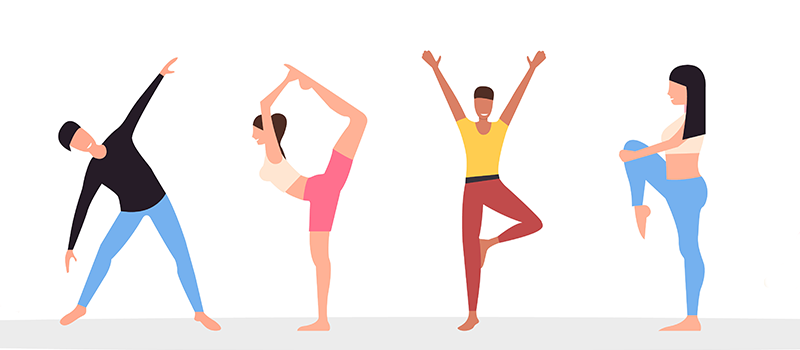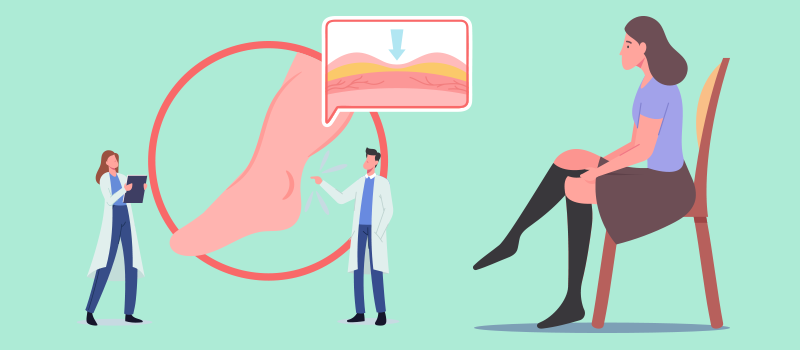What’s the Buzz
The Bee Healthy Blog
How to Improve Poor Circulation?

The average human body contains 5 liters of circulating blood and 60,000 miles of blood vessels through which the blood circulates. The circulatory system carries oxygen-rich blood and nutrients to the body’s tissues and takes away waste products. Therefore, good blood circulation is essential to sustain life and maintain a healthy body. However, some health conditions can affect the body’s ability to keep blood flowing and lead to poor blood circulation.
Please continue reading to find out what causes poor circulation and how you can improve blood circulation.
What causes poor blood circulation?
Poor blood circulation can be the result of various underlying conditions that affect healthy blood flow, such as:
- Smoking: Chemicals in tobacco products damage your blood vessels and put you at higher risk of poor circulation.
- Obesity: Being overweight or obese puts you at risk of hypertension, diabetes, and high cholesterol, which are all risk factors for poor circulation.
- Atherosclerosis: Blood flow slows or stops if there is plaque buildup or hardening of the arteries, which is called atherosclerosis.
- Hypertension: The force of blood flow can cause damage to blood vessels if you have high blood pressure.
- Diabetes: High blood sugar levels can damage your blood vessels.
- Varicose veins: Damage to the valves in the veins can cause enlarged veins and blood flow in the wrong direction.
- Peripheral artery disease: Buildup of plaque in the arteries of your legs and feet can limit the amount of blood reaching these parts of the body.
- Deep vein thrombosis: Blood clots in leg veins can lead to reduced blood flow.
- Pulmonary embolism: A blood clot in the lung can prevent blood from flowing to this vital organ.
- Low blood pressure: If your blood pressure is low, enough blood cannot reach all your organs. Very low blood pressure can be life-threatening.
- Raynaud’s disease: Exposure to cold or stress can cause blood vessels in your fingers and toes to constrict (become narrow).
How can you tell you have poor circulation?
Poor circulation symptoms are the result of oxygen and nutrients not reaching organs and tissues throughout your body. These signs and symptoms can include cold fingers and toes, pale skin or blue-tinged skin, dry skin, brittle nails, hairfall, numbness and tingling (pins and needles sensations), muscle weakness or soreness, chest pain, leg pain, leg swelling, bulging veins, slow healing wounds, and erectile dysfunction in men.
How to improve your circulation?
Some of the best ways of improving circulation are lifestyle changes that help to keep your blood vessels healthy and increase blood flow to cells, tissues, and organs in your body. If you have bad circulation, these tips will help to improve blood flow and reduce your risk of cardiovascular disease. However, if you are experiencing symptoms of poor circulation, it is ideal to see your physician to rule out any serious cause.
Quit smoking
Nicotine and other chemicals in tobacco products, e-cigarettes, and smokeless tobacco harm the walls of your blood vessels and cause the thickening of your blood. If you need help with quitting smoking, talk to your doctor about smoking cessation aids that can reduce cravings and prevent nicotine withdrawal symptoms.
Control hypertension
If your blood pressure is too high, it can lead to the hardening of your arteries, greater stress on the heart to keep the blood pumping, and poor circulation. If lifestyle changes are not enough to lower your blood pressure, your doctor may prescribe an antihypertensive medication.
Stay well hydrated
Blood is about half water. That’s why staying well hydrated is vital for good circulatory health.
Get moving
More and more people spend extended periods every day sitting in the same position or leading an otherwise sedentary lifestyle. This is a big risk factor for circulation problems. Exercising regularly is very important for healthy veins. Physical activity can also increase blood flow to vital organs and prevent blood clots in the legs. You should aim to do a mix of exercise types, including cardio (walking, running, biking, swimming), strength training, and low-impact exercises like stretching and yoga to increase circulation.
Elevate your legs
If your lower extremities (feet or ankles) are swollen, lying on your back on the floor and putting your legs up against a wall will send blood flowing in the other direction (towards your heart) and reduce swelling.
Wear compression socks
Compression stockings place pressure on your leg muscles and cause them to squeeze, helping your blood to flow back towards your heart. If you have poor circulation, your doctor or pharmacist can help you pick the right compression socks with the correct amount of pressure that you need for good circulation.
Eat a healthy diet
Diet can indirectly improve circulation by keeping your blood pressure, cholesterol levels, and weight in a healthy range. Try to eat lots of fresh fruits and vegetables and whole grains. Avoid saturated fats and too much salt.
Get a massage
A relaxing massage has many health benefits. It can improve your cardiovascular health by stimulating the flow of blood and lymph fluid. A massage can also help to decrease stress and improve sleep quality. It’s important to manage stress because stress can increase blood pressure, which in turn can lead to poor circulation.
Limit alcohol consumption
Alcohol can affect the cardiovascular system in many ways. It has been linked to hypertension, coronary artery disease, stroke, peripheral arterial disease, and other circulation issues. You should limit alcohol intake to moderate amounts, no more than one drink per day for women and two drinks per day for men.
Take omega-3s to support your circulatory system
Omega-3 fatty acids can help to improve circulation and prevent cardiovascular disease. Natural food sources of omega-3s include fatty fish like tuna and salmon, flaxseeds, pumpkin seeds, walnuts, and green leafy vegetables like kale. If your diet does not contain enough omega-3 fatty acids, consider taking a supplement.
Soak in a warm bath
Soaking in warm bath can lead to better circulation temporarily because the warm water improves blood flow throughout your body.
Take medications to improve your circulation
Vein specialists sometimes prescribe medications like cilostazol (Pletal) or pentoxifylline (Trental) to improve the flow of blood and reduce symptoms of poor circulation. They can perform procedures to improve your circulation.
References:











SOCIAL